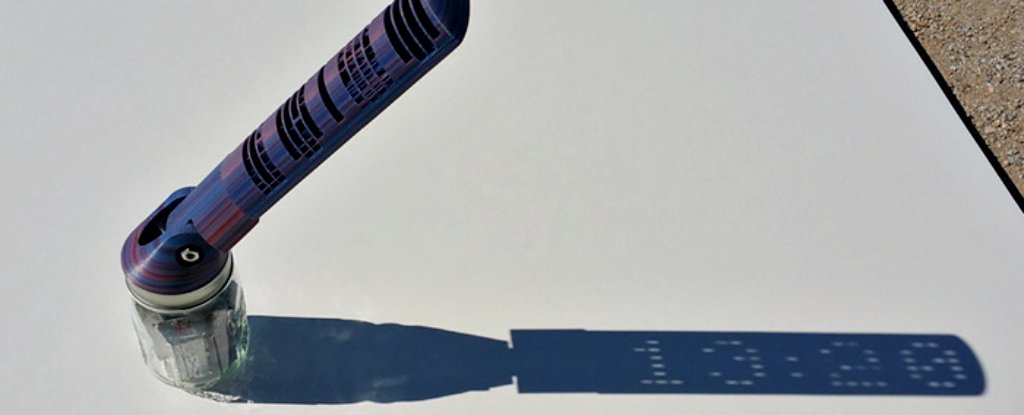From around 1500 BCE, right up to the 14th century, many of our ancestors figured out the time using a sundial - you know, those triangular devices that cast a shadow on a dial below, revealing what hour it was.
They might not be as accurate as the clocks we have today, but sundials still work based on the simple premise of the Sun's predictable shift in position as our planet spins. And now a French engineer has finally brought the device into the digital age, creating a 3D-printed sundial that displays the time in '80s-style digital-style numbers.
Okay, so it's not technically digital. But ss Earth spins on its axis and the position of the Sun shifts in our sky, the beams of light travel through an intricate network of tiny holes printed onto the sundial, to display a digital-style time readout on the moving shadow.
Created by a French engineer who goes by the name of Mojoptix, the outdoor clock uses a number of carefully calibrated holes in the triangular part of the sundial - officially known as a gnomom - to make sure the right time is projected on the plate below.
So, when it's 10am, you'll see 10:00am projected onto the shadow below.
There are some limitations to the design - it obviously doesn't work at night, and is only designed to be accurate between the hours of 10am and 4pm.
And it only tells the time in 20-minute intervals, so it's probably not going to help you get to your next meeting on time.
But it does all of this using nothing but beams of sunlight - the same thing our ancestors from 3,600 years ago used to tell the time of day with, so it's a pretty cool upgrade.
It's not the first digital-style sundial - back in 1994, a team of inventors from Germany and the US patented the design for a digital sundial and started making their own. But their versions don't have the same geeky '80s display font, or the same retro sundial plate to cast their shadow on.

Comments
Post a Comment